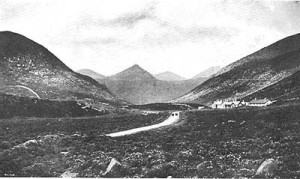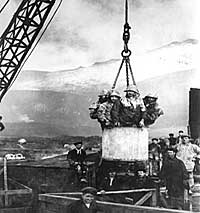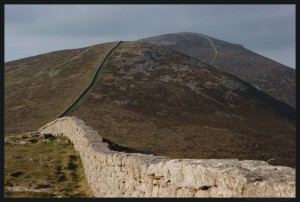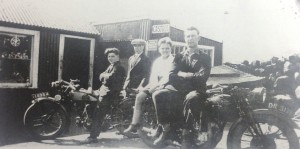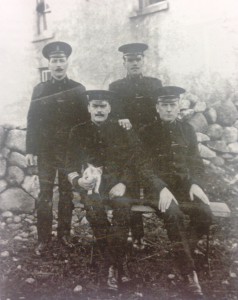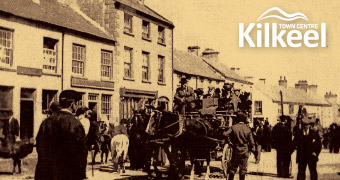The Silent Valley Scheme was drawn up, consisting of three stages due to the ever increasing demand for water. The Mournes were recommended to supply Belfast with water due to the quantity of water available and its purity. Frederick William McCullough, Chief Engineer to Belfast City and District Water Commission designed the Silent Valley Reservoir but died before its completion.
The Happy Valley, as it was known before construction
1893-1905
Stage 1
The first stage began with the purchase of 9000 acres of ‘water catchment area’ in the Mournes and plans to build a 22 mile boundary wall. The water was to be diverted from the Kilkeel and Annalong Rivers, via 35 miles of tunnels and pipelines to a holding reservoir at Knockbracken near Belfast.
Workers in a crane
1904- 1922
The Mourne Wall was started in 1904 to define the boundary of the 9000 acres purchased. It stretches for 22 miles and took 18 years to complete. The work was carried out during April to October, giving employment to those Mourne men skilled in granite working.
The Mourne Wall
Watertown
This small town was built on the Western side of the Valley. The workers lived here; carpenters, electricians, plumbers, engineers. It became home to 600-700 people and a total of 2000 lived here over the period of construction. The houses were made from wood for the workers and their families.
William Cousins’ Cycle Workshop at the Silent Valley, 1929
Women made porridge for the men and left it outside overnight. It was then cut into slices for the workers lunch or ‘piece’. Watertown had a small hospital with a doctor and a nurse, a hall for dances, snooker, boxing etc. which also acted as a ‘silent movie’ cinema. There were shops which ranged from grocery to hardware to boot mending. A blue van called the ‘Tin Lizzie’ would take people to Kilkeel on Fridays and Saturdays if they needed any extra shopping. A generator provided the first street lights in Ireland through the original vacuum lamps.
Silent Valley Police Squad, 1926. Seated is Sergeant William Bullick and Constable Lawless
